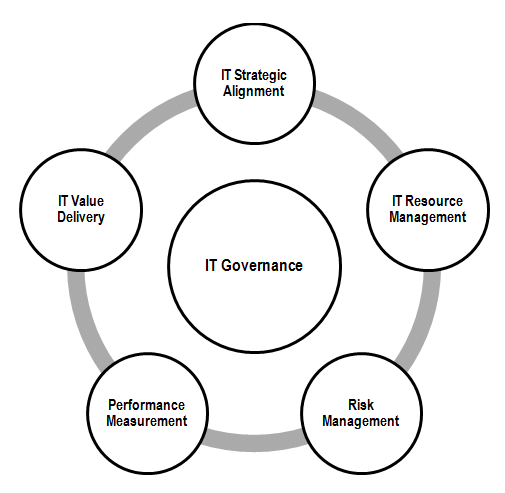In today’s digital age, information technology (IT) is at the heart of every organization. It powers our businesses, connects us with the world, and helps us stay productive. But with great power comes great responsibility, and that’s where IT governance practices come into play. In this blog, we’ll break down the concept of IT governance in simple terms and explore some practical practices that can help organizations steer their IT ship in the right direction.
Understanding IT Governance
Imagine your organization’s IT as a ship, and IT governance as the captain steering it. IT governance is the set of rules, processes, and practices that ensure your IT operations run smoothly, stay on course, and are aligned with your organization’s goals. Think of it as the compass that keeps you from getting lost at sea.
The Pillars of IT Governance
Now, let’s dive into the key pillars of IT governance:
1. Clear Goals and Strategy: Just like a ship needs a destination, your IT needs clear goals. These should be aligned with your organization’s overall strategy. For example, if your company wants to improve customer service, your IT goals might include enhancing your website’s user experience.
2. Effective Risk Management: Every voyage has its challenges and uncertainties. IT governance helps you identify and manage risks. It’s like having lifeboats and safety measures in place in case of a storm.
3. Resource Management: Efficient resource management is like making sure you have enough fuel for the journey. IT governance helps you allocate resources (money, time, and talent) wisely.
4. Compliance and Regulations: There are rules and regulations in every sea. IT governance ensures your ship (IT) complies with laws, industry standards, and security requirements.
5. Performance Measurement: To know if you’re on the right course, you need to track your progress. IT governance helps you measure how well your IT is performing and make adjustments if needed.
Simple IT Governance Practices
Now that we understand the basics of IT governance, let’s explore some straightforward practices that can help organizations, big or small, to manage their IT effectively:
1. IT Steering Committee: Establish a small group of decision-makers, including business leaders and IT experts, to guide your IT strategy. This committee can help ensure that IT aligns with the organization’s goals.
2.Regular Audits: Just as ships undergo inspections, your IT should undergo regular audits. These checkups ensure that your systems are secure and compliant with regulations.
3. Risk Assessments: Identify potential IT risks and create strategies to manage them. This practice will help you stay prepared for unexpected challenges.
4. Prioritize Projects: Like a ship captain deciding on the next port of call, prioritize your IT projects based on their importance and impact on the organization’s goals.
5. Document Policies and Procedures: Clear documentation is like the ship’s log, recording important events and decisions. Document IT policies and procedures so everyone understands how things work.
6. Training and Awareness: Ensure that your crew (employees) knows how to use IT resources safely and effectively. Conduct regular training and raise awareness about cybersecurity.
7. Vendor Management: If you’re relying on external IT vendors, have a clear strategy for managing these relationships. Make sure they align with your organization’s goals and values.
8. Feedback Loop: Encourage feedback from employees and users of IT services. Their input can help you make continuous improvements.
9. Emergency Response Plan: Just as ships have lifeboats, your IT should have an emergency response plan. Be prepared for data breaches, system failures, or other IT emergencies.
10. Regular Performance Reviews: Measure the performance of your IT against predefined goals. Use this data to make informed decisions about future IT investments and improvements.
The Benefits of Simple IT Governance
Implementing these simple IT governance practices can lead to a smoother voyage for your organization. Here are some of the benefits:
1. Reduced Risks: By managing risks proactively, you’re less likely to encounter unexpected IT disasters.
2. Cost Efficiency: Effective resource management can help you save money and make the most of your IT investments.
3. Alignment with Business Goals: IT governance ensures that your IT strategy is in sync with your organization’s overarching objectives.
4. Compliance and Security: Following regulations and industry standards can protect your organization from legal troubles and security breaches.
5. Improved Performance: Regular performance reviews and adjustments can lead to more efficient IT operations.
6. User Satisfaction: Well-managed IT leads to better user experiences and increased satisfaction among employees and customers.
**In Conclusion**
IT governance is like the compass that keeps your organization on course in the digital sea. By following simple practices, you can navigate your IT ship effectively, reduce risks, and achieve your business goals. Remember, IT governance is not a one-time task but an ongoing process that adapts to your organization’s changing needs. So, set your sails, follow these practices, and sail smoothly towards success in the digital world.


